Synthetic corks are a far more effective way to seal a wine bottle than just your ordinary natural wine cork stopper. There is not much question to this fact. Pretty much everyone in the wine making industry agrees with this statement.
In fact, synthetic corks can be thought of as sealing a wine bottle just as air-tight as a screw cap. If you’ve ever sealed a wine bottle with one, then you already know. You can tell just by looking that no air is getting past a synthetic cork.
But the real issue here is not how well synthetic corks or natural corks seal a wine bottle, but rather, which one will age the particular wine you are bottling in the most appropriate way. A perfect seal is not always the best option.
For some wines to age to their fullest potential they need air but at a very, very slow rate over a very, very long period of time. A natural cork stopper does this to varying degrees depending on the density of the cork. Air will seep through it.
Big wines that are full and rich such as a Cabernet tend to need some transfer of oxygen through the cork to become its best over time. With these wines you are better off using a high grade natural cork such as our extra first grade corks rather than using synthetic corks.
Wines that require some aging, but have a fruitiness as some of its character, will usually need less air to transfer through the cork. An example of this would be a California style Sauvignon Blanc. With these wines synthetic corks may be your best option.
———————————————————————————————————
Ed Kraus is a 3rd generation home brewer/winemaker and has been an owner of E. C. Kraus since 1999. He has been helping individuals make better wine and beer for over 25 years.
Category Archives: Wine
Don't Be Intimidated By The Gravity Hydrometer
One of the wine making products we offer that seems to overwhelm so many beginning wine makers is the gravity hydrometer. But it’s not necessarily the actual using of the gravity hydrometer that seems to be so confounding. Just its looks alone seem to have the ability to put a beginning winemaker into a blank stare.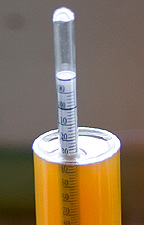
And it’s understandable. When you first look at a gravity hydrometer, basically what you are seeing is a scientific instrument. That can be intimidating in of itself. It has a funny shape with all kinds of measuring scales and other markings to be read along its side, and inside there’s a blob of stuff that you have no idea what it is or what it’s does.
Well, if there’s such a thing as looks being deceiving, this is certainly a prime example. The hydrometer doesn’t really do anything except float. It has nothing inside that goes up or down like a thermometer. It doesn’t change color like a prism. It just floats.
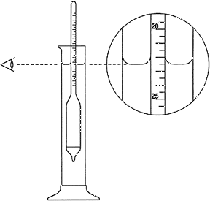
Your only job is to see how high or how low it is floating. You do this by looking where the surface of the liquid crosses the scales. What this information does is tell you how much sugar is in the liquid. The higher the gravity hydrometer floats the more sugar you have.
During a fermentation sugar turns into alcohol, so if you know how much sugar you have, you’ll know how much alcohol it can make. The hydrometer is also useful for checking the progress of a fermentation and for telling you if your fermentation is complete.
We have a couple of articles listed on our website that will give you more details about the hydrometer and how it is used in wine making, “Getting To Know Your Hydrometer” and “Hydrometer Scales And What They Mean.” Both articles with take the intimidation right out of you.
———————————————————————————————————
Ed Kraus is a 3rd generation home brewer/winemaker and has been an owner of E. C. Kraus since 1999. He has been helping individuals make better wine and beer for over 25 years.
Experience What Making Wine Is Like!
If you’ve never had a chance to see wine brewing you’re missing out on quite an experience. Even if you do not plan on making wine I suggest you take a winery tour whenever possible to see a fermentation in action–up close and personal. It’s very interesting, and you’ll get to see all the wine making materials and equipment that go along with making wine at the winery.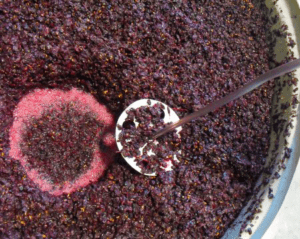
The first thing you will notice are the wonderful smells that permeate the area where the wine is fermenting. An array of aromas that can range from tart plums to yeasty bread, all blended together to create a pleasant bouquet of sorts.
When you actually see a wine brewing you will notice tiny bubbles being created and floating to the top. The bubbles are actually CO2 gas being created by the fermentation activity. Wine yeast eat the natural sugars in the juice and ferment it into half CO2 gas and half alcohol.
This bubbling also causes a layer of foam to form on the top surface. Pulp will also rise to the top because of the bubbling. From time to time a worker will have to push the pulp back down in to the liquid so that a dry cap is not formed. This is a process called punching.
While making wine at home is not usually done on such a grand scale as that of a winery, it is certainly just as interesting to watch. For the home winemaker the actual wine brewing is usually done in carboys, also known as water jugs. You can see right through the glass as if you had your own little winery to watch.
Foam forms on top and pulp rises to the top just like in a winery, and the pleasant aromas fill the room where the wine brewing is taking place. It is truly a fascinating hobby. And one that brings its own rewards.
To learn more about making your own wine just visit our website and take a look at all the articles we have on how to make your own wine at home.
———————————————————————————————————
Ed Kraus is a 3rd generation home brewer/winemaker and has been an owner of E. C. Kraus since 1999. He has been helping individuals make better wine and beer for over 25 years.
The Easy Way To Start Making Wine
If you want to know how to make your own wine the easy way, here’s a little secret. Start by selecting one of our beginner wine kits. Each kit contains all the essential winemaking materials and ingredients that you will need to start making your own homemade wines.
We have three different homemade wine kits to choose from depending on what you want to use to make your wine, whether it be your own fruit, concentrated grape juice, or a wine ingredient kit.
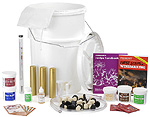 Your Fruit! Necessities Box: This homemade wine kit is designed specifically for individuals who want to make wine using their own fruit. It has all the wine making materials and ingredients you will need including instructions. This kit is ideal for making country-style wines from strawberries, blackberries, apple juice and many, many other fruits. It also comes with over 160 different wine recipes including a complete copy of the book, First Steps In Winemaking.
Your Fruit! Necessities Box: This homemade wine kit is designed specifically for individuals who want to make wine using their own fruit. It has all the wine making materials and ingredients you will need including instructions. This kit is ideal for making country-style wines from strawberries, blackberries, apple juice and many, many other fruits. It also comes with over 160 different wine recipes including a complete copy of the book, First Steps In Winemaking.
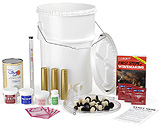
Sun Cal Necessities Box: This wine making kit was created for someone who wants to make wine using one of our Sun Cal concentrated grape juices. It has everything you will need including your choice of Sun Cal concentrate and complete directions. Using concentrated grape juice keeps the wine making process simple and quick. And you don’t have to wait for the fruits to come in season. You can make wine all throughout the year.
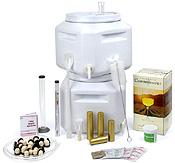
California Connoisseur Necessities Box: Last but certainly not least. This homemade wine kit allows you to make wine with your choice of California Connoisseur ingredient kit. It has all the materials you will need. It also includes instructions that are specific to the wine making ingredients in the ingredient kit. The directions take you by the hand and guide you through each step.
So what are you waiting for? Choose the kit that’s right for you and get started, today!
———————————————————————————————————
Ed Kraus is a 3rd generation home brewer/winemaker and has been an owner of E. C. Kraus since 1999. He has been helping individuals make better wine and beer for over 25 years.
Store Bought Grape Juice vs. Wine Making Grape Juice
Here’s a question we get quite often from beginning wine makers who are just starting to learn how to make their own wine. “What’s the difference between grape juice for drinking, like you buy at the store, and grape juice for wine making like you sell?”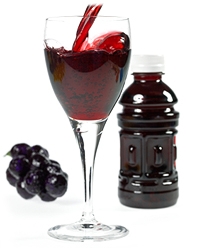
The main difference is in the grapes that are being used to make the juice. When it comes to making wine from grapes, I can’t stress enough that the number one factor is the grape itself. Not only the type of grape but also the quality of grape plays a huge role in how your wine will turn out.
Welch’s, as an example, uses Concord grapes, mostly grown in the Finger Lakes region in New York state. If you want to make a Concord wine, then using Welch’s will work fine. You can also get a White Niagara and a red blend as well, but that’s about all you’ll find at the grocery store.
We offer a Concord, a White Niagara and many, many various red blends. But beyond this we offer specific varietal grapes from regions all around the world. For example, we have a Sauvignon Blanc grape juice from New Zealand, and a Merlot grape juice from France.
Each has it’s own unique flavor, bouquet and overall character that permeates into the resulting wine. These are grapes that were bred and cultivated for the purpose of making wine.
We have an extensive list of wine ingredient kits on our website that feature several dozens of different wine grape varieties and grape blends. To learn more about what kind of grape juice you might like you might want to take a look at our Wine Selector Tool.
———————————————————————————————————
Ed Kraus is a 3rd generation home brewer/winemaker and has been an owner of E. C. Kraus since 1999. He has been helping individuals make better wine and beer for over 25 years.
Oh, How Wine Making Has Changed
One of the things that has really made home wine making so popular over the last few years is the availability of more and better wine making products. The average home wine maker today has a whole host of products that make life a lot easier and the resulting wine much better.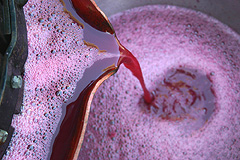
It wasn’t all that long ago that I remember having to build or concoct certain items myself because nobody sold them or they hadn’t been invented yet. There’s even a book that came out in the 70’s call, Woodwork For Winemakers that shows how to build homemade wine equipment. I still have a wine bottle drainer made from plywood and pieces of dowel-rod that this book showed me how to build.
But now things are very different. Just about everything a winery would have, an individual can have, only on a much smaller scale: grape presses, grape destemmers, wine filters, transfer pumps. You can even get what’s called a Bottle Tree for draining wine bottles that easily takes the place of the wooden contraption I built way back when.
Ingredients have come a long, long way as well, particularly grape juices and grape juice concentrates. In the 60’s and 70’s there was only one brand of wine making concentrate available called Indian Valley which sold fruit and grape concentrate grown in Oregon. Now we carry 12 different brands of wine making juices featuring grapes from all over the world–from well known grape growing regions.
Looking into the future who knows what kind of products will spring-up. The only thing I know for sure is that we will continue to search to find them and make them available to the home wine making market.
———————————————————————————————————
Ed Kraus is a 3rd generation home brewer/winemaker and has been an owner of E. C. Kraus since 1999. He has been helping individuals make better wine and beer for over 25 years.
Do You Have A General Purpose Wine Yeast?
Just got an email from one of our wine making newsletter subscribers. They are wanting to know if any of the wine yeast on our website is considered to be a general purpose yeast–one they can use for any type of wine. I think this is a really good question, so I thought I would share the answer on this blog as well.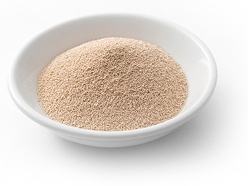
Back in the 70’s Red Star was the only company packaging wine yeast for the home wine making industry, and they only packaged one strain. It was the Montrachet that we still offer today.
It was marketed as a Neutral-Flavor Wine Yeast. Today, we still consider Montrachet to be an all-purpose wine yeast. Alternately, you can use the Lalvin’s K1V-1116, which is the same strain of wine yeast just from a different producer.
Both the Montrachet and K1V-1116 are actually yeast strain UCD 522. The “UCD” stands for University of California, Davis. They are the ones who isolated the strain. One of the strongest features of this strain that it is very hearty and can take over a must very aggressively before other organisms have a chance to flourish.
Having a few packets on hand is a great idea simply because you never know when some fruit may come tumbling your way. With a couple of packets stored in the refrigerator you’ll always be ready for wine recipes of any kind.
———————————————————————————————————
Ed Kraus is a 3rd generation home brewer/winemaker and has been an owner of E. C. Kraus since 1999. He has been helping individuals make better wine and beer for over 25 years.
The Most Important Wine Making Tip Of All!
From time to time I get asked by beginning wine makers for any tips or advise I might have, and my immediate reply is, “always be clean”.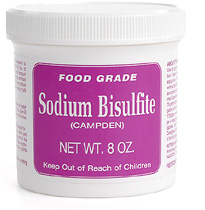
Out of all the wine making tips I could offer, I have found this to be the most valuable to the beginning wine maker. It’s simple to do, and it eliminates a lot of the aliments I see in homemade wines with respect to off-flavors and off-odors.
So what do I mean by being clean? First, you need to make sure your equipment and bottles are soapy-clean. Any dirt, grime or dust needs to be removed. Secondly, you need to sanitize your equipment. This means using a disinfectant to destroy a majority of the microbes that may be present on the equipment.
I recommend using sodium metabisulfite for this purpose. It’s safe to use and effective. And unlike chlorine and many other sanitizers, it does not need to be rinsed. Just let your equipment and bottles drip dry.
Sodium metabisulfite comes in a granulated form that you mix with water to create a sanitizing solution. We offer it in 8 ounce jars. That’s enough to make 32 gallons of solution for just pennies a gallon. Just give a surface contact time of 20 minutes to all your equipment and you’ll be all set.
Visit our website to learn more about sodium metabisulfite and how it can be used in wine making. You can also visit the product detail page that will give you all the specifics about this product.
———————————————————————————————————
Ed Kraus is a 3rd generation home brewer/winemaker and has been an owner of E. C. Kraus since 1999. He has been helping individuals make better wine and beer for over 25 years.
The Story Behind The Cork
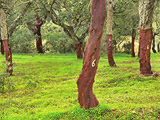 Even though the use of corks for sealing vessels can be detected back to the days of Cleopatra and Mark Antony, its use did not become the primary way of sealing wine until the 1700’s. This is when glass wine bottles came into popularity making the use of wine bottle corks almost essential.
Even though the use of corks for sealing vessels can be detected back to the days of Cleopatra and Mark Antony, its use did not become the primary way of sealing wine until the 1700’s. This is when glass wine bottles came into popularity making the use of wine bottle corks almost essential.
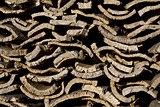
The majority of cork comes from Portugal with some also being produced in Spain, Italy and and a few other countries. It’s actually the bark of a cork oak tree. Traditionally, the bark is first harvested once the tree reaches 25 years of age, then every 9 or 10 years after that. A healthy cork tree can easily produce cork past the ripe age of 200 years.
The cork bark is stripped from the tree and then separated into grades. The cork strips are boiled and then dried for several weeks, then cut into smaller strips. The width of these strip are made to about equal a wine cork stopper’s height. It is these strips from which the wine cork is die cut or “punched”. The corks are then trimmed, and again, separated by grade.
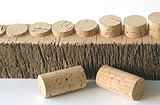
Before shipping, the corks are treated with a hydrogen peroxide based bleach and packaged into bags along with SO2 gas. This is to sanitize the cork and make it ready for use.
If you need to buy corks, take a look at the corks we offer on our website. We have more than one grade based on how long you want to store your wine.
———————————————————————————————————
Ed Kraus is a 3rd generation home brewer/winemaker and has been an owner of E. C. Kraus since 1999. He has been helping individuals make better wine and beer for over 25 years.
Keep Track Of Your Fermentations With A Hydrometer
 One of the most valuable tools any home winemaker can have is a gravity hydrometer. A hydrometer can be used for several different tasks such as determining the alcohol level of a wine as it is being made, or determining the proper amount of sugar to be added to various wine recipes.
One of the most valuable tools any home winemaker can have is a gravity hydrometer. A hydrometer can be used for several different tasks such as determining the alcohol level of a wine as it is being made, or determining the proper amount of sugar to be added to various wine recipes.
But what really makes the hydrometer an essential tool for the home wine maker is it’s ability to track the progress of a fermentation. By taking readings throughout the fermentation you can determine how far along your fermentation or gotten, or even if the fermentation has completed.
So what is a gravity hydrometer anyway? Basically, it’s a sealed, long glass tube with a weight at one end that floats in liquid. Readings are taken with the hydrometer by seeing how high or low it is floating.
There are scales on the side of the tube. All you have to do is see where the level of the liquid crosses the scale and that’s your reading. You can track you wine’s progression by keeping a log. Each time you take a reading, just write down the date and the reading.
For more information about the gravity hydrometer visit our website. There you will find a selection of hydrometers to chose from as well as information on how to use a hydrometer.
———————————————————————————————————
Ed Kraus is a 3rd generation home brewer/winemaker and has been an owner of E. C. Kraus since 1999. He has been helping individuals make better wine and beer for over 25 years.
